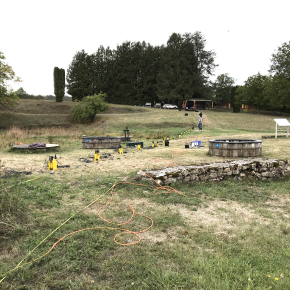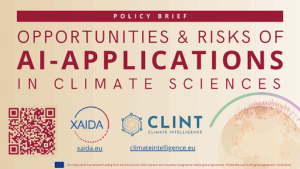thèse
Rafael Ramon
1474162
Quantifying sediment source contributions in contrasted agricultural catchments (Uruguay River, Southern Brazil)
Summary
Connection : The defence will take place in a full videoconference format and in English and will be accessible via the following link : https://cnrs.zoom.us/j/96607667485
Password : F5dF6C
Abstract :
Intensification of water erosion by agricultural activities is one of the main causes of soil degradation in subtropical regions. In addition to the on-site negative impacts observed in cropland, the excess of surface runoff increases the transfer of sediments and contaminants to water bodies, resulting in environmental, economic and social deleterious effects. The objective of this thesis is to develop and apply original sediment source fingerprinting techniques in two tributaries of the Uruguay River Basin with contrasting conditions in terms of geology, land use, management, and soil types, representative of those found in the drainage area (266,132 km²). The Conceição River catchment (804 km²) is located in upper parts of the Uruguay River Basin. This catchment is representative of the basaltic plateau, where deep Ferralsols rich in clay and iron oxides predominate, and are cultivated for soybean, corn and cereals production or covered with pastures for dairy farming. In contrast, the Ibirapuitã River catchment (5,943 km²) is representative of the sandstone plateau. With a predominance of shallow Regosols and sandy Acrisols more sensitive to degradation, it is mainly occupied by native grasslands of the Brazilian Pampa Biome with extensive cattle ranching, although irrigated rice fields are also found in lowlands. Moreover, a rapid increase in the surface area cultivated with soybean in this catchment has been observed in the last twenty years. Soil samples were collected to characterize land use-based sediment sources and suspended sediment was sampled at the outlet of these catchments using different strategies. All samples were analyzed for a panel of properties. Their geochemical composition, diffuse reflectance spectroscopy properties, radionuclide activities and magnetic susceptibility were determined to provide a set of potential tracing parameters. Magnetic and diffuse reflectance spectroscopy analyses were also carried out on sediment samples collected on the main stream of the Uruguay River, downstream of its confluence with both representative tributaries. Results of sediment source contribution are consistent with field observations. However, as catchment area and source number increase, more uncertainty is observed. Surface sources (pasture and cropland) were indicated as the main source of suspended sediment in the Conceição catchment, contributing with approximately 50%. Stream banks provided the second main source of fine bed sediment, contributing with approximately 35%. Cropland was also found to provide the main source in the Ibirapuitã catchment, contributing 32% of the sediment despite occupying only 9.5% of the total catchment area, followed by subsurface sources (stream bank and gully) with 29%. Unpaved roads and native grassland provided lower contributions (24 and 15%, respectively) in Ibirapuitã catchment. These results indicate that the soil conservation practices used in these catchments are not enough to prevent soil erosion in cropland. Moreover, agricultural activities may enhance erosion and sediment delivery to the river systems, causing soil impoverishment and contamination of water resources. Finally, through the comparison of sediment properties of both tributary catchments, this thesis provided – to our knowledge – the first insights into the contribution of both contrasting geomorphologic regions to the main Uruguay River. The main river sediment samples had similar characteristics to those observed in the Ibirapuitã River, indicating the Pampa region as the main likely source. Despite the associated uncertainties, these results further increase the current concerns regarding the ongoing land use changes observed in the Pampa biome. Appropriate soil conservation practices should therefore be urgently applied in agricultural areas of this region to reduce soil erosion and sediment delivery to the river systems.
Composition of the jury
Christine Alewell, Professor – University of Basel (Switzerland) – Rapporteur
Hugo Velasco, Professor – University of San Luis (Argentina) – Rapporteur
Christine Hatté, Research Director at CEA/LSCE, University Paris Saclay (France) – Examiner
Jean Minella, Professor – Federal University of Santa Maria (Brazil) – Examiner
Carlos Gustavo Tornquist, Professor – Federal University of Rio Grande do Sul (Brazil) – Examiner
Tales Tiecher, Professeur – Federal University of Rio Grande do Sul (Brazil) – Supervisor (Brazil)
Olivier Evrard, Researcher at CEA/LSCE, University Paris Saclay (France) – Supervisor (France)






